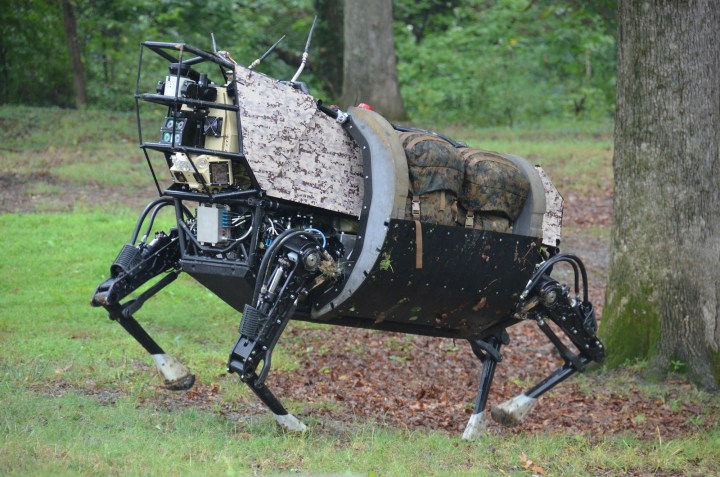
The Marines initially were hopeful the LS3 robot would provide ground support for troops by carrying up to 400 pounds of gear, food, and other supplies. In 2014, the robot was featured in military exercises in the Pacific Rim, where the robot joined patrols, crossed rugged terrain, and responded to commands as intended.
Despite the early success, the Marines decided to shelve the robot because of its operational noise level, which was too high for comfort. “As Marines were using it, there was the challenge of seeing the potential possibility because of the limitations of the robot itself,” said Kyle Olson of the Warfighting Lab to Military.com. “They took it as it was: a loud robot that’s going to give away their position.”
To overcome the noise issue, Boston Dynamics introduced Spot, a smaller robot that is powered by a quieter electric-powered engine. Event though Spot solved the noise problem, it was less effective than the larger AlphaDog because its small frame could only carry 40 pounds and it lacked the autonomous technology that made the AlphaDog so successful.
Currently, both the Spot and the AlphaDog robots are in storage with no plans for deploying them in a military capacity. The Marine Corps’ Warfighting Lab has learned a great deal from the robot project and is not giving up on autonomous technology. The military lab will continue to develop drone and other unmanned technologies for use in medical supply and reconnaissance missions.
*An earlier version of this article mistakenly referred to the LS3 as the “BigDog” instead of the “Alpha Dog”. The article has since been amended to include the correct nickname.



